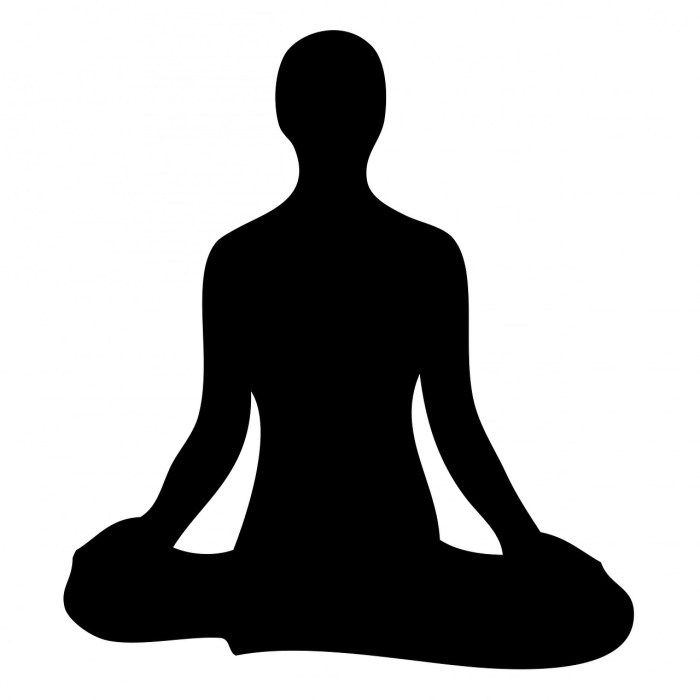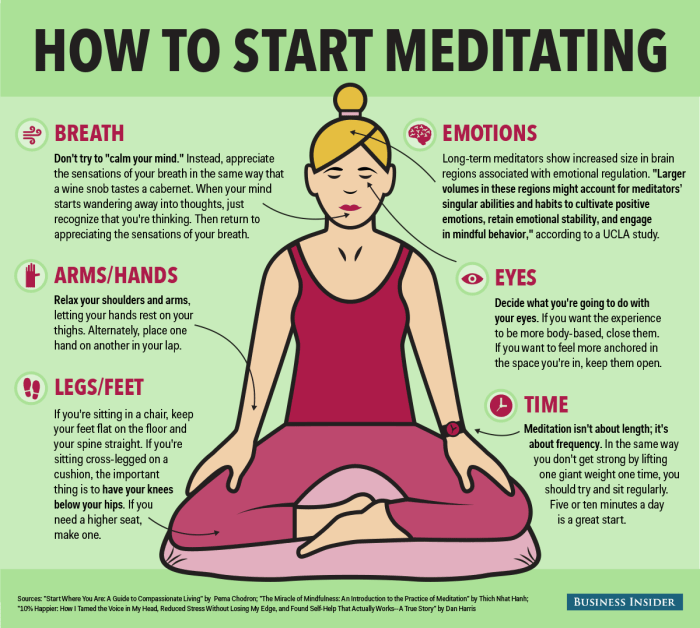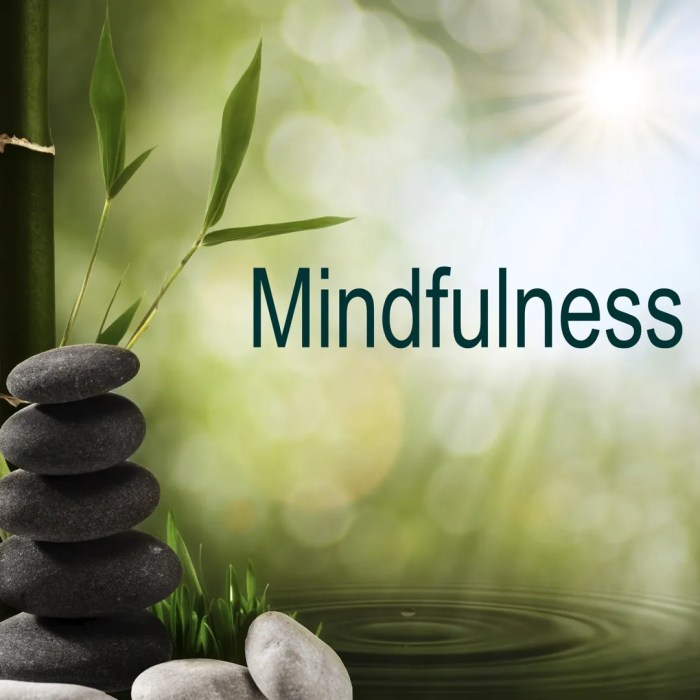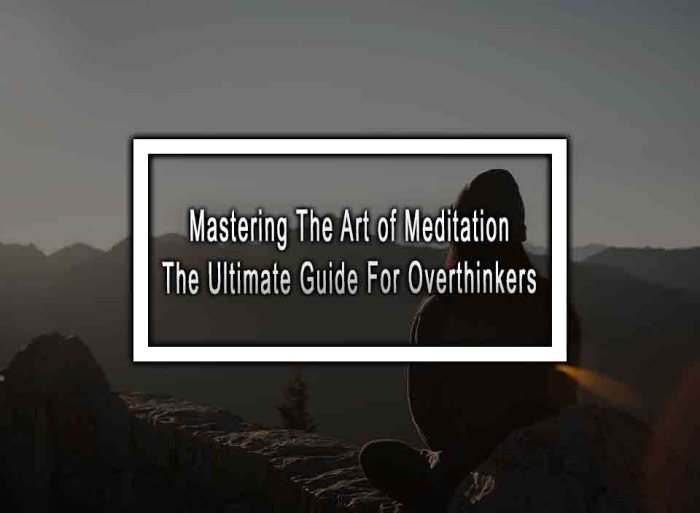Embark on a transformative journey with the 12 Steps to Mastering the Art of Meditation, exploring the profound benefits and techniques that can elevate your practice to new heights.
Discover the essence of creating the perfect meditation space, mastering your posture, focusing your mind, understanding different practices, overcoming challenges, deepening your practice, and exploring the realm of guided meditations.
Introduction to Meditation: 12 Steps To Mastering The Art Of Meditation

Meditation is a practice that involves focusing the mind on a particular object, thought, or activity to achieve mental clarity, emotional calmness, and increased awareness. It is a centuries-old tradition that has been used in various cultures and religions around the world.One of the key benefits of practicing meditation is the reduction of stress and anxiety. By calming the mind and body, meditation helps individuals manage their emotions and develop a sense of inner peace.
Additionally, meditation can improve concentration, creativity, and overall well-being.
Types of Meditation Techniques
- Mindfulness Meditation: This technique involves focusing on the present moment without judgment, allowing thoughts and feelings to come and go.
- Transcendental Meditation: In this practice, a mantra is repeated silently to help achieve a state of deep relaxation and awareness.
- Loving-Kindness Meditation: This type of meditation focuses on developing feelings of compassion and kindness towards oneself and others.
- Yoga Meditation: Combining physical postures, breathing exercises, and meditation, yoga meditation helps improve flexibility, strength, and mental clarity.
Setting Up Your Meditation Space
Creating a peaceful environment for meditation is essential to enhance your practice and experience inner peace. Your meditation space should be a place where you can relax, focus, and connect with your inner self. Here are some tips on setting up your meditation space:
Essential Items for Your Meditation Space
- Comfortable cushion or mat: Choose a cushion or mat that provides adequate support and comfort during meditation.
- Inspirational items: Include items such as candles, crystals, or spiritual symbols that resonate with you and help create a calming atmosphere.
- Plants or flowers: Adding greenery to your meditation space can help purify the air and create a sense of tranquility.
- Incense or essential oils: Use calming scents like lavender or sandalwood to enhance relaxation and focus during meditation.
Importance of Lighting and Decor
Creating the right ambiance in your meditation space can significantly impact your practice. Consider the following:
- Soft, natural lighting: Opt for soft, natural light sources like candles or Himalayan salt lamps to create a soothing atmosphere.
- Minimalist decor: Keep your meditation space clutter-free and free of distractions to promote a sense of calm and focus.
- Sacred geometry or tapestries: Decorate your space with sacred geometry or tapestries that inspire mindfulness and introspection.
Finding the Right Posture

When it comes to meditation, finding the right posture is crucial for a successful practice. The way you position your body can greatly impact your ability to focus, relax, and maintain a sense of calm during your meditation session.
Various Meditation Postures
- Lotus Position: This classic meditation posture involves sitting cross-legged with each foot resting on the opposite thigh. This position helps promote a straight spine and open hips, allowing for deep breathing and focus.
- Half-Lotus Position: Similar to the lotus position, but with one foot resting on the opposite thigh and the other foot tucked under the opposite knee. This is a more accessible option for those with limited flexibility.
- Sitting on a Chair: If sitting on the floor is uncomfortable, you can also meditate while sitting on a chair with your feet flat on the ground and your back straight. This posture can be more suitable for individuals with physical limitations or injuries.
Tips for Maintaining a Comfortable Posture
- Find a quiet and peaceful space where you can sit comfortably without distractions.
- Keep your spine straight but relaxed, allowing for natural alignment from your head to your tailbone.
- Relax your shoulders and place your hands on your lap or knees in a comfortable position.
- Rest your hands on your knees or in a mudra position to help channel energy flow during meditation.
- Close your eyes gently and focus on your breath, allowing your body to settle into a state of relaxation.
Focusing Your Mind

When it comes to meditation, focusing your mind is a crucial aspect of the practice. By honing your ability to concentrate and quiet the mental chatter, you can deepen your meditation experience and reap its full benefits. Here, we will explore techniques to help you focus your mind during meditation, tips on quieting the mind, and the significance of breath awareness in this practice.
Techniques for Focusing the Mind
- Awareness of Breath: One of the most common techniques is to focus on your breath. Pay attention to the sensation of inhaling and exhaling, allowing it to anchor you in the present moment.
- Mantra Repetition: Using a mantra, a word or phrase repeated silently or aloud, can help keep your mind focused and prevent distractions from taking over.
- Visualizations: Imagining a peaceful scene or a calming image can also aid in directing your attention and maintaining focus during meditation.
Tips for Quieting the Mind and Letting Go of Distractions
- Acknowledge and Release: When distracting thoughts arise, acknowledge them without judgment and gently guide your focus back to your chosen point of concentration.
- Practice Regularly: Consistent meditation practice can train your mind to let go of distractions more easily over time.
- Set Intentions: Before starting your meditation session, set an intention to stay present and focused, which can help in quieting the mind.
The Role of Breath Awareness in Meditation
- Regulating Emotions: Focusing on the breath can help regulate emotions and create a sense of calmness and relaxation.
- Anchoring the Mind: Breath awareness serves as an anchor for the mind, providing a constant point of reference to return to when distractions arise.
- Enhancing Mindfulness: By being fully present with the breath, you cultivate mindfulness, the ability to observe your thoughts and feelings without getting caught up in them.
Understanding Meditation Practices

When it comes to meditation, there are various practices that can help individuals achieve a state of calm and mindfulness. Understanding these different meditation practices can provide valuable insights into how each technique can benefit different aspects of life.
Mindfulness Meditation
- Mindfulness meditation involves focusing on the present moment without judgment.
- This practice can help reduce stress, improve focus, and enhance self-awareness.
- By staying present and aware of thoughts and sensations, individuals can cultivate a sense of inner peace and clarity.
Loving-Kindness Meditation
- Loving-kindness meditation focuses on cultivating feelings of compassion and kindness towards oneself and others.
- Practicing loving-kindness meditation can enhance empathy, reduce negative emotions, and promote emotional well-being.
- By fostering feelings of love and compassion, individuals can strengthen relationships and improve overall mental health.
Transcendental Meditation
- Transcendental meditation involves the use of a mantra to transcend conscious thought and reach a state of deep relaxation.
- This practice is known for reducing anxiety, improving creativity, and promoting overall well-being.
- By transcending the chatter of the mind, individuals can experience profound levels of peace and inner silence.
Overcoming Challenges
When it comes to mastering the art of meditation, there are common challenges that many practitioners face along the way. Overcoming these obstacles is crucial to deepening your practice and experiencing the full benefits of meditation.
Dealing with Distractions
Distractions are a common challenge during meditation, as our minds tend to wander easily. To overcome distractions, try focusing on your breath or a mantra to anchor your attention. Acknowledge the distraction without judgment and gently guide your focus back to your meditation object.
Managing Restlessness, 12 Steps to Mastering the Art of Meditation
Restlessness can also hinder your meditation practice. If you find yourself feeling fidgety or agitated, try incorporating gentle movement or stretching before sitting down to meditate. Establishing a calming pre-meditation routine can help settle your mind and body.
Importance of Consistency
Consistency is key when it comes to mastering meditation. Make a commitment to practice regularly, even if it’s just for a few minutes each day. Over time, you’ll build resilience against challenges and develop a deeper sense of inner peace and clarity.
Deepening Your Practice

As you continue your meditation journey, it’s essential to deepen your practice to experience its full benefits. Deepening your meditation practice involves enhancing your concentration and awareness, allowing you to reach deeper states of mindfulness and inner peace.
Incorporating Meditation Into Your Daily Routine
One way to deepen your meditation practice is by incorporating it into your daily routine. Consistency is key in meditation, so try to set aside a specific time each day for your practice. Whether it’s in the morning before starting your day or in the evening before bed, finding a regular time to meditate can help you deepen your practice over time.
- Start with just a few minutes each day and gradually increase the duration as you become more comfortable with meditation.
- Consider setting reminders or alarms to help you remember to meditate each day.
- Experiment with different meditation techniques to find what works best for you and keeps you engaged in your practice.
Deepening Concentration and Awareness
Deepening your meditation practice also involves honing your concentration and awareness skills. These are essential aspects of meditation that can help you stay present and focused during your practice.
- Practice mindfulness throughout your day by staying present and focused on the task at hand.
- Use breath awareness techniques to anchor your attention and deepen your concentration during meditation.
- Explore advanced meditation practices like loving-kindness meditation or body scan meditation to deepen your awareness and connection with yourself and others.
Exploring Guided Meditations
Guided meditations are audio or video recordings that provide instructions and guidance for your meditation practice. They can be especially helpful for beginners who may struggle with staying focused or understanding the meditation process on their own.
Benefits of Guided Meditations
- Guided meditations help beginners by providing step-by-step instructions on how to meditate properly, including breathing techniques and visualization exercises.
- They can assist in calming the mind and reducing stress, as the soothing voice of the guide helps to keep you focused and relaxed.
- Guided meditations can introduce you to different meditation techniques and styles, allowing you to explore and find what works best for you.
Finding Guided Meditation Sessions
- Online platforms like YouTube, Insight Timer, and Calm offer a wide range of guided meditation sessions for free or through subscription.
- Apps like Headspace and Simple Habit also provide guided meditations tailored to different needs, such as sleep, stress relief, or mindfulness.
- You can attend meditation classes or workshops in your local community or wellness centers, where experienced instructors often lead guided sessions.
Summary
As you embrace these 12 steps, may your meditation practice blossom into a sanctuary of peace and self-discovery, guiding you towards a harmonious state of mind and body.